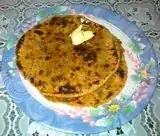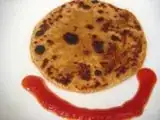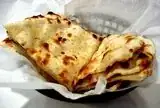On asking the owner of a restaurant, he told me that the Tandoori chicken I was served was meant to have burnt edges because it is roasted on charcoal. I checked, and found it to be true.
But, I see restaurants all over India serving parathas, naan, and roti with black spots all over them and customers happily chew away on it. They laugh at me (and say it is normal to eat the burnt parts) when I pluck out all the burnt spots and keep them separate because I get stomach pain when I eat them. I don't understand why anyone would eat burnt food! Even when food is roasted over a camp fire, I assume people throw away the burnt portion of the meat that's exposed to the fire and smoke, and eat the cooked meat inside.
So is it an understood part of cooking parathas, naan, and roti, that it has to be cooked until it gets burnt spots? Or is there a way to cook it fully without it developing burnt spots? Whenever I've seen a restaurant serve these without burnt spots, I've also noticed that the inner layer (and sometimes the outer edges) of the paratha, naan, or roti is still raw.



